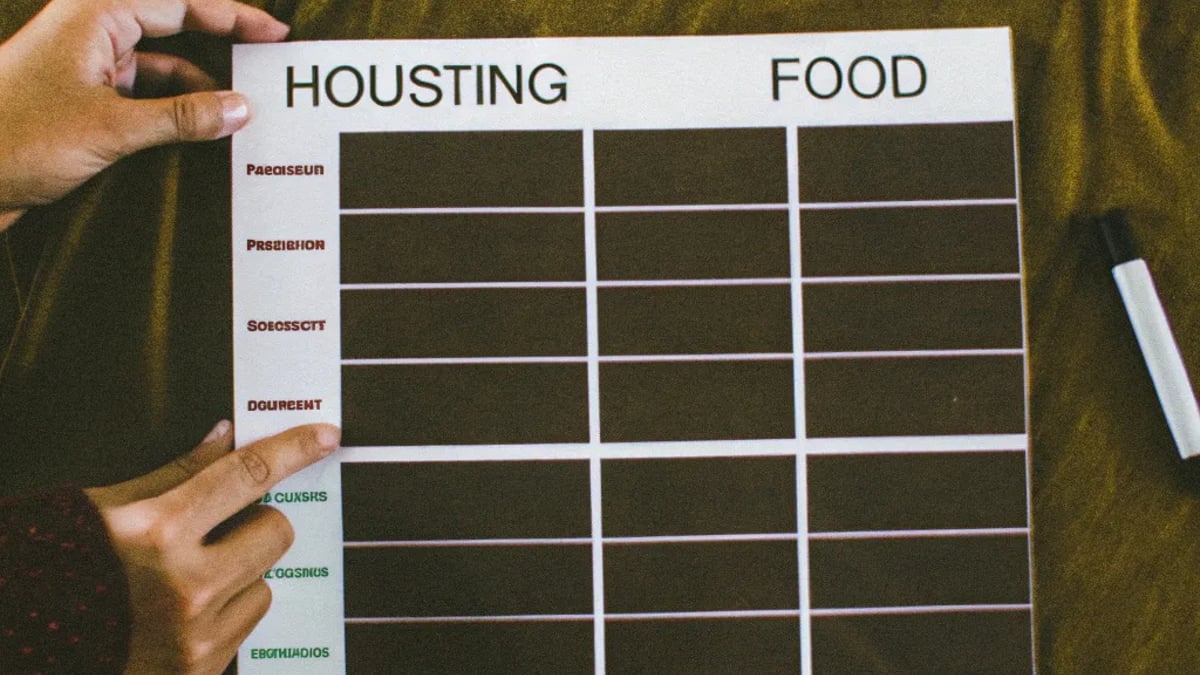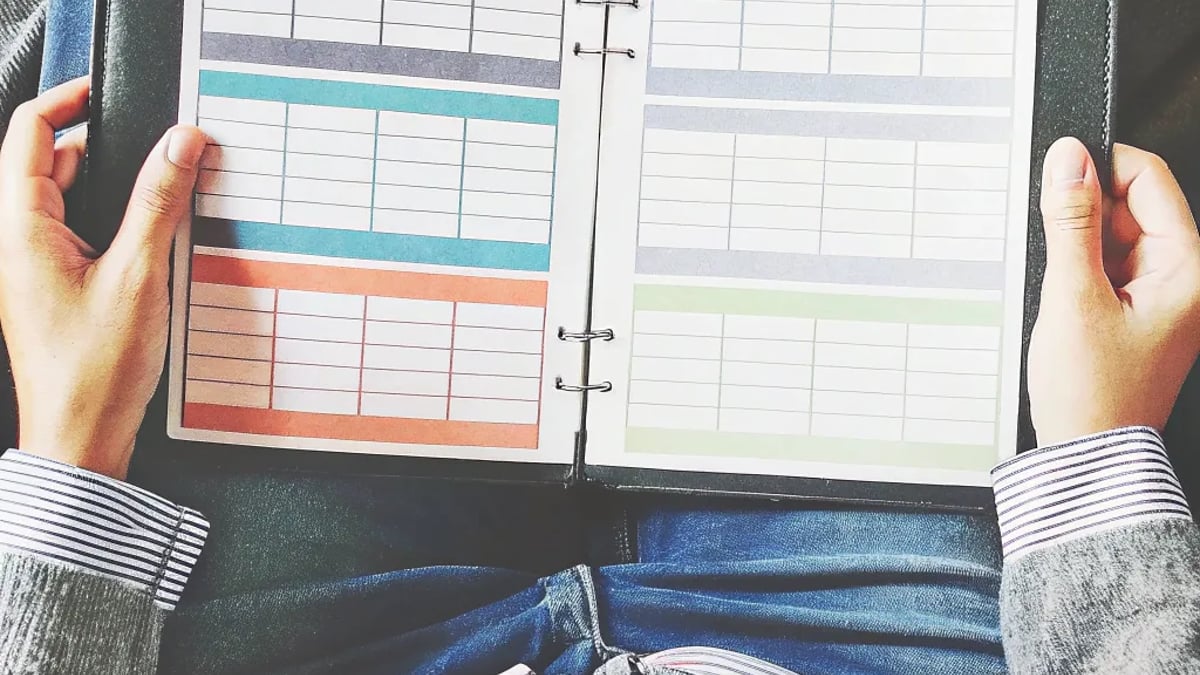
Ever glanced at your bank account at month's end and wondered where all your money went? I've been there too. Creating a monthly budget isn't about restricting your spending or living like a hermit – it's about gaining control of your finances so your money works for you, not against you.
Why Budgeting Matters
Budgeting isn't just for finance nerds or people struggling with debt. A good budget acts like a roadmap for your money, giving you direction and purpose with every dollar you earn.
"Budgeting can help you feel more in control of your finances and make it easier to save money for your goals," according to Bank of America's Better Money Habits resource center. This control is what ultimately leads to financial freedom.
When I first started budgeting, I was shocked to discover I was spending over $300 monthly on random coffee shops and takeout lunches. That realization alone helped me redirect some of that money toward a vacation fund instead.

Getting Started: The 50/30/20 Approach
If you're new to budgeting, complex spreadsheets might feel overwhelming. Instead, try the straightforward 50/30/20 rule that many financial experts recommend:
- 50% for needs (housing, groceries, utilities, minimum debt payments)
- 30% for wants (dining out, entertainment, hobbies)
- 20% for savings and debt repayment beyond minimums
This simple framework gives you flexibility while ensuring you're covering essentials and building financial security.
Step 1: Calculate Your Monthly Income
Start with your take-home pay – that's what actually hits your bank account after taxes and deductions. If you have irregular income, the Oregon Division of Financial Regulation suggests using "an average of the last 12 months of income" as your baseline.

Don't forget to include any consistent side hustles, child support, or other regular income sources.
Step 2: Track Your Spending
You can't manage what you don't measure. For at least one month, track every expense – from your rent payment to that pack of gum you grabbed at checkout.
There are several ways to do this:
- Use a budgeting app like Mint or YNAB
- Review credit card and bank statements
- Keep receipts and log them in a notebook
- Use a simple spreadsheet
I personally prefer using a combination of automatic tracking through my bank's app for regular bills and a quick note on my phone for cash purchases.
Step 3: Categorize Your Expenses
Once you've tracked your spending, group expenses into categories. According to NerdWallet, common budget categories include:
- Housing (rent/mortgage, insurance, property taxes)
- Transportation (car payment, gas, maintenance, public transit)
- Food (groceries, dining out)
- Utilities (electricity, water, internet, phone)
- Insurance (health, life, disability)
- Debt payments (student loans, credit cards)
- Savings (emergency fund, retirement)
- Personal (clothing, entertainment, subscriptions)
How to Make Your Budget Work in Real Life
Creating a budget is one thing – sticking to it is another. Here are some practical tips:
Use the right tools for you. Whether it's a paper notebook, spreadsheet, or budgeting app, choose what you'll actually use consistently.
Build in some flexibility. Life happens – unexpected expenses pop up. As Money.com points out, "Not only can this strategy give you more control over your spending, but it can also help you prepare for unexpected costs."
Revisit and adjust regularly. Your budget isn't set in stone. Review it monthly and make adjustments as your income, expenses, and goals change.
Don't forget irregular expenses. Car registration, holiday gifts, and annual subscriptions can throw off your budget if you don't plan for them. Set aside a little each month for these predictable but infrequent costs.
What If My Budget Doesn't Balance?
If your expenses exceed your income, you have two options: increase income or reduce expenses. Sometimes both are necessary.
To cut expenses, look first at your "wants" category. Can you reduce subscription services, dine out less, or find cheaper entertainment options?
For necessary expenses, get creative. Maybe you can negotiate bills, find a roommate, or refinance debt for lower payments.
Increasing income might mean asking for a raise, picking up overtime, or starting a side hustle. Even temporary income boosts can help you get back on track.
Common Budgeting Questions
What's the best budgeting method if I hate math?
Zero-based budgeting through apps like YNAB (You Need A Budget) can be helpful if you dislike math. These tools do the calculations for you while still giving every dollar a purpose. Alternatively, the cash envelope system is very tangible – when the envelope is empty, you've reached your spending limit for that category.
Remember, the best budget is one you'll actually use. As Consumer.gov notes, "Use the information to help you plan the next month's budget." Each month gets easier as you learn from previous months.
Final Thoughts
Budgeting isn't about perfection – it's about progress. Some months you'll nail it, and others you'll need to adjust. The important thing is to keep going.
When you take control of your money through budgeting, you're not just organizing numbers – you're creating possibilities for your future self.
Disclaimer: This information is provided for educational purposes only and should not be considered financial advice. Everyone's financial situation is unique, and you should consult with a qualified financial professional before making significant financial decisions.
Tags

About Evelyn McKinley the Author
Evelyn McKinley is a seasoned investment strategist with over two decades of experience in portfolio management and sustainable investing. Her unique focus on ethical investment practices helps individuals and organizations align their financial goals with their values.
Recommended Articles
AI tool to research Home loans
Discover how AI tools are revolutionizing home loans, making it easier for buyers to find tailored mortgage options effortlessly.
Top Walking Routines for Seniors With AFib
Discover effective walking routines for seniors with AFib to improve health and wellbeing through gentle exercises tailored to individual fitness levels.
Returned Amazon Items: What Buyers Should Know
Navigate the complexities of returned items on Amazon. Learn about conditions, policies, and tips for savvy bargain shopping.
How to Find Walmart Recliner Chair Clearance Deals
Discover top tips for finding Walmart recliner chair clearance deals, maximizing savings while enjoying comfort and style in your home.
What Most People Get Wrong About Treating Dry Eyes
Explore common misconceptions about treating dry eyes. Get a comprehensive guide on effective strategies and debunk prevalent myths.




